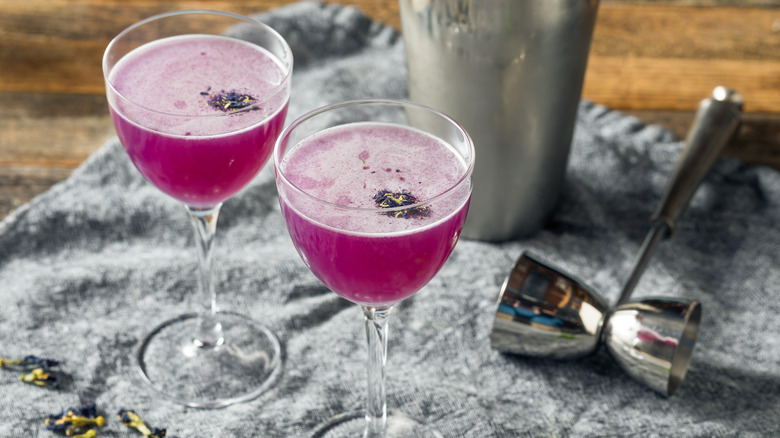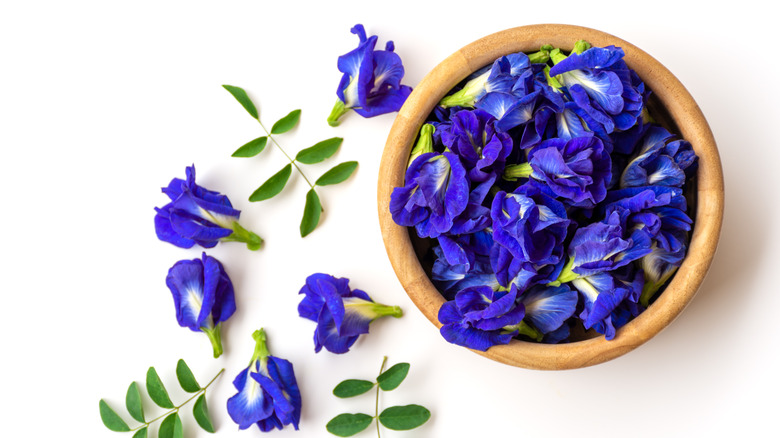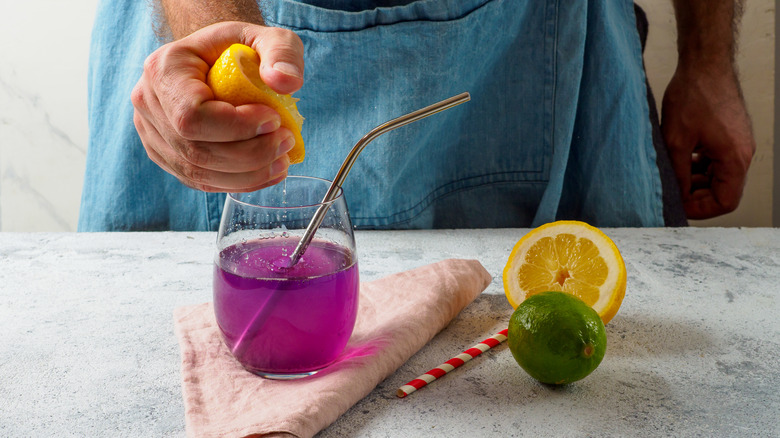What Gives Purple Gin Its Iconic Hue?
Interest in purple gin has risen substantially over the last several years. As such, there's an ever-increasing number of distillers producing the spirit — but not all purple gins are made in the same way.
Some purple gins rely on plums for their vibrant color while others are infused with violets after distillation (and are often referred to as violet gin, as opposed to purple). However, the variety of purple gin that's attracted a lot of attention is made with an interesting ingredient that creates a seemingly magical color-changing effect when other ingredients are mixed with it: butterfly pea blossoms.
Native to Southeast Asia, the butterfly pea plant can be used to make cosmetics, tea, or natural dyes and is known for its health benefits. The plant contains high levels of antioxidants and may help fight inflammation. Meanwhile, the plant's anthocyanins are responsible for the blossoms' rich color — and for its capacity to change colors, too.
The beginnings of purple gin made with butterfly pea flowers
One of the foremost makers of purple gin is master distiller Peter Hunt of Victoria Distillers, the producers of the brand's purple gin, Empress 1908. In an effort to create a spirit that would pay homage to British Columbia's legendary Fairmont Empress Hotel, using various teas served at the hotel's extraordinarily popular daily Afternoon Tea, Hunt accidentally created what would come to be a highly sought-after purple gin.
Hunt crafted the gin using a number of botanicals (the current recipe includes Empress tea, juniper, grapefruit peel, coriander seed, cinnamon bark, rose petals, ginger root, and, of course, butterfly pea blossoms) but was disappointed when the spirit turned purple. Assuming that discerning gin drinkers wouldn't be interested in a purple version of the spirit, he was inclined to toss it in the trash. Instead, the gin was served at the hotel's bar where drinkers enthusiastically sipped on it and eventually sought it out for home consumption.
The surprises didn't end there. While preparing for a cocktail competition, Hunt and others were confused when they realized that the cocktails they had prepared with the gin had changed color.
What can you make with purple gin?
Peter Hunt would later realize that the high levels of anthocyanins in the butterfly pea flowers meant that acidic mix-ins would turn the drink red while basic ingredients would result in a blue-hued beverage. Thanks to these color-changing properties, mixologists have begun to use butterfly pea flower itself in cocktails. However, since the powdered version of the flower doesn't dissolve entirely, using purple gin can be a better alternative.
You can experiment with creating cocktails of various shades from pale pink to deep red by adding citrusy mixers like lemon, lime, orange juice, grapefruit juice or sour mix. Conversely, use basic type ingredients like cucumber or mint to shift the shade towards blue.
Purple gin can be used in any cocktail in which you would typically use gin. Regardless of whether you make a simple drink like an Aviation or a French 75, or channel your inner mixologist for something new, this pretty gin can certainly make it easier to craft a creative cocktail at home.


